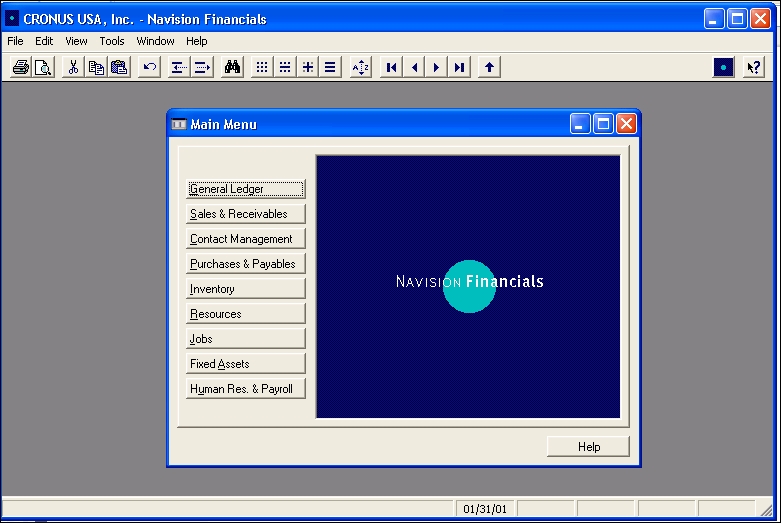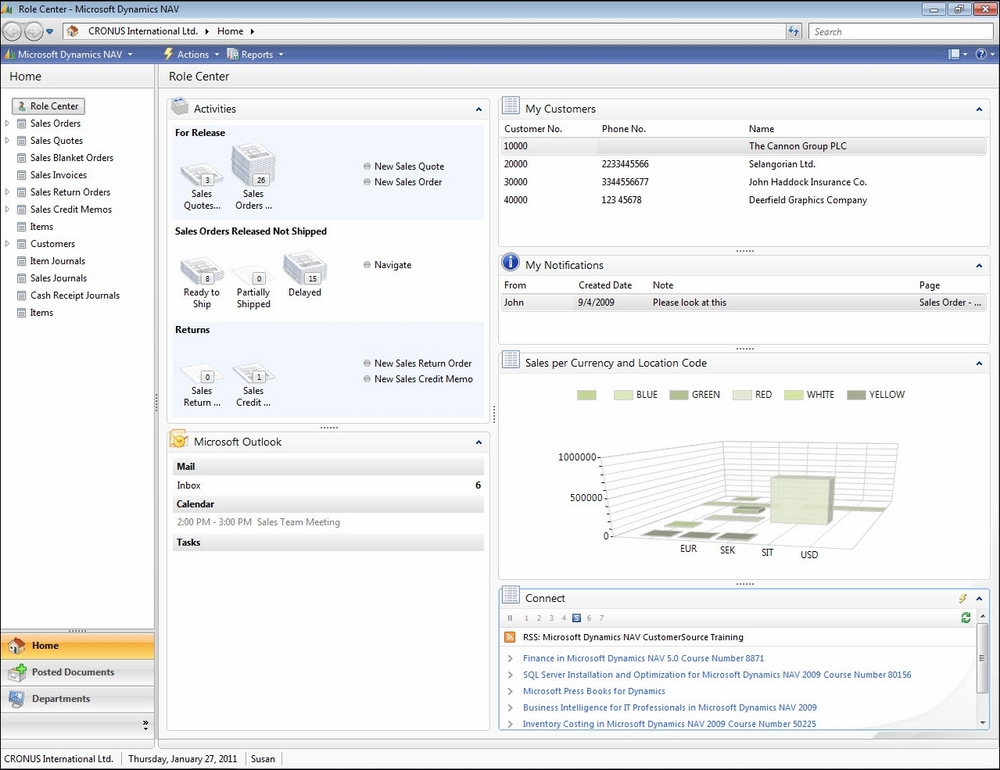We are not historians, but we thought that it would be important to know where we come from and where we are going. Some of the current restrictions or features can be better understood if we know a bit of the history of Dynamics NAV. This is why we have added this section.
Dynamics NAV was first developed by a Danish firm and the program was called Navision A/S. In 2002, Microsoft bought Navision A/S and included it in the Microsoft Business Solution division. The product has gone through several name changes. The names: Navision Financials, Navision Attain, and Microsoft Business Solutions Navision Edition, have been used to refer to the product that is currently called Microsoft Dynamics NAV. Note that all the previous names included the word Navision. This is why many people keep calling it Navision instead of NAV.
Prior to Dynamics NAV 2009, the development environment was actually the primary end user interface before Microsoft revamped the user interface that we call the Role Tailored Client (RTC).
One of the greatest technological breakthroughs with the original Navision (the name before it was called Dynamics NAV) was that the application programming objects, the user interface, and the database resided together, in one file! Back in the late 1990s and early 2000s, no other software came close to having an efficient design like this. This was the main menu for Navision Financials version 2.0:

We're now more than a decade away from 2000 and technology has changed quite a bit. Dynamics NAV has been very up to date with the latest technology that has the best impact for businesses. However, most of these improvements and updates are mostly in the backend. This is an important reason why Dynamics NAV has never faded into history. There were a couple of user interface improvements; however, largely, it mainly looks and feels very much the same as before. This is the main menu for Dynamics NAV 5.0:

Then something happened. With the rise of a company called Apple, people started paying more attention to the aesthetics and the overall interface of the technology they're using. People demanded not just powerful software with a strong backend, but they also wanted an elegant design with a simple and intuitive user interface.
Because of this shift in user perception, what was once the greatest innovation in accounting software since sliced bread, had become not obsolete, but outdated.
When you put the old interface (called Classic Client) against some of the newer applications, even though the backend was light years ahead, the Classic Client was the ugly one. And we all know somebody who made a terrible decision based only on looks, but not really what's inside.
So when NAV 2009 was introduced, the Role Tailored Client was released, which is the interface you see when you install Dynamics NAV for end users. NAV 2009 was unique in that it allowed both Classic Client and Role Tailored Client to coexist. This is mostly to appease the existing NAV gurus and users who did not want to learn the new interface.
In addition, NAV 2009 replaced the classic reporting with the report definition language client-side (RDLC) reporting. RDLC reports brought in a big change because the layout of the report had to be designed in Visual Studio, outside Dynamics NAV, to bring in the advantages of SQL Server Reporting Services technology; while pages changed the way of developing the user interface.
This is what NAV 2009 in the RTC looked like:

At the first glance, NAV 2009 and NAV 2016 do not look too different. You will have to understand that there were significant user interface and usability changes. We can list out these changes, but if you're not already familiar with Dynamics NAV (or Navision), you'll will find this disinteresting.
That grace period expired when NAV 2013 was released and the Classic Client user interface was completely removed. Microsoft basically renamed the Classic Client as Development Environment. For the foreseeable future, it looks like the Development Environment and the Windows Client environment will remain separated.
Now we're at Dynamics NAV 2016, with tons of performance and usability enhancements, which is what this book is about.
